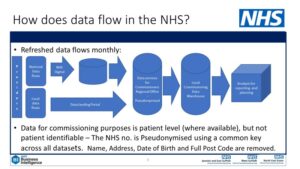Data provides the opportunity to generate insight on some of our biggest challenges affecting people in Essex.
In the public sector we talk about the potential of joining data held by our organisations to gain valuable new insight about how our services are used throughout Essex. Within our grasp is a significant opportunity to attain a deeper understanding about peoples’ experiences within Essex so that we can design services that protect vulnerable people and prevent them from experiencing harm. To achieve this goal, it’s critical that we look at some of the basic and persistent blockers that prevent us from succeeding.
Our network of data professionals Be Part Of The Equation (BPOTE), brings together data analysts, data scientists, data developers and researchers from across 25 different organisations within Essex’s public sector including County, Unitary and District councils, Universities, Police, Fire and Rescue, multiple health organisations and SELEP, to name a few. Together we recognise that siloed working is a hurdle for us to overcome to propel us forward, but there’s a fundamental blocker to collaboration that we need to tackle first. Our lack of a shared vocabulary around “public sector data” takes the number one spot for preventing our blossoming data partnerships. Until we speak the same language, we won’t understand what data is available across the entire public sector and we can’t fully appreciate what’s possible.
We are all guilty of talking in general, and interchangeably, about “data”. “Health data”, “police data”, “council data”, each organisation does not have only one dataset, so what exactly are we referring to? Data is complex, and so are our organisations. The NHS alone provides healthcare services to more than 1 million patients every 36 hours, made up of lots of organisations (public and private businesses working collaboratively) providing different healthcare services, just imagine the data asset map for this structure! Without a clear and shared understanding of what data exists within each sector, and outside of our own organisations, we’re impeding our ability to identify potential opportunities to join data to build shared insight about common problems.
Data is becoming more fundamental to the design, delivery and evaluation of services and patient care – Putting the patient at the centre of their care
In November, as a first step I took the time to explore with BPOTE colleagues the datasets available within health commissioning, and how data is pseudonymised and flows, aiming to shed some light on what and how we use data to derive insight that helps us to improve individual care, speed up diagnosis, plan local services and research new treatments. You can watch my presentation here for an overview of the primary, secondary, and tertiary care sector organisations within the NHS and a detailed explanation of the wealth of data flows that are available locally and nationally and the frequency.

As part of our population health management approach, we are linking data to understand current health and care needs and predict what local people will need in the future. Our goal is to design more joined-up and sustainable health and care services and make better use of public resources. Population health management is a partnership approach across the NHS and other public services including councils, the public, schools, fire service, voluntary sector, housing associations, social services, and police. All have a role to play, and data to join, to address the interdependent issues that affect people’s health and wellbeing.
Within the complex landscape of the NHS, we have our own standardisation and recording of data definitions, which creates a health data language that is widely used in our sector. We have a national data model and dictionary that sets the record standards, definitions of fields and recording protocols for the NHS, this is effective for us but would not be meaningful to data colleagues in other public sector organisations. Perhaps a significant next step would be to create a shared data language for public services that will enable us all to at least start reading the same dictionary, even if we’re not yet able to be on the same page.